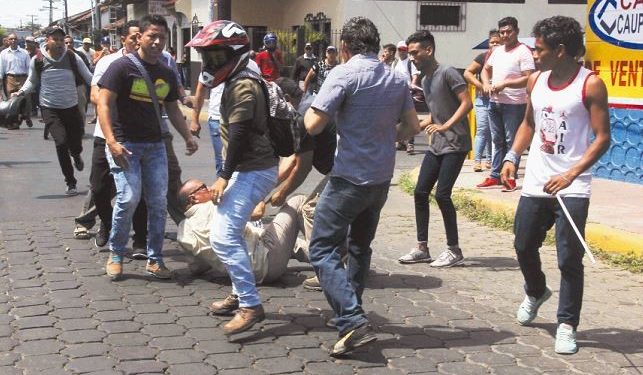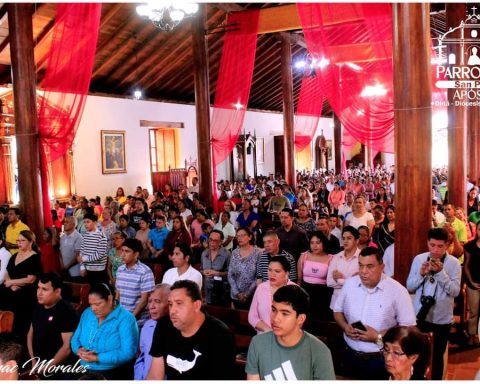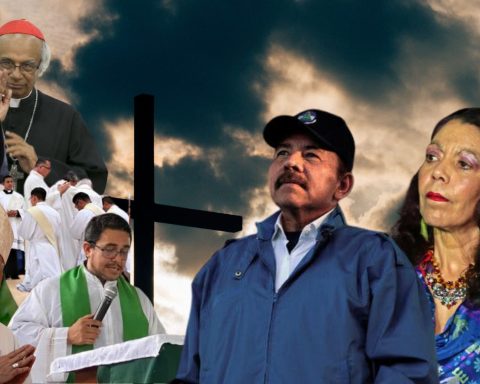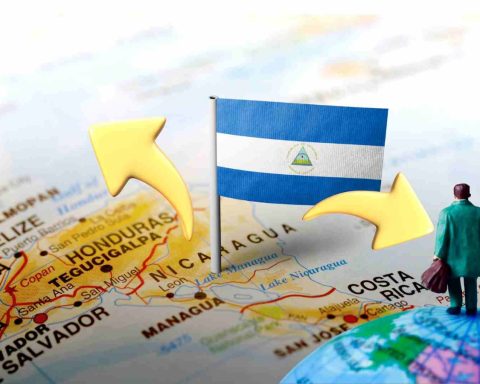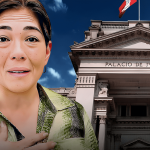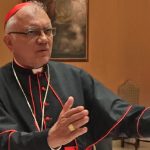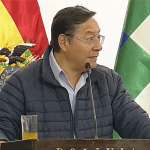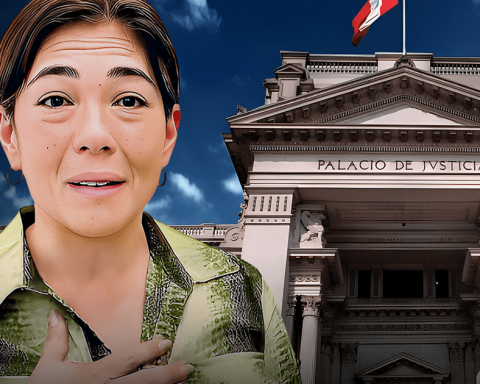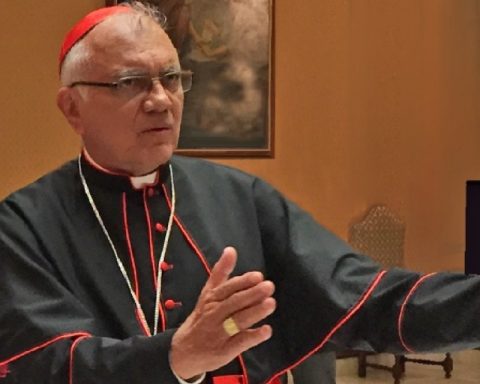Don Nicolás Palacios, a 64-year-old retiree, was participating in a march in León against the Inss reforms, a Sandinista fanatic attacked him and threw him to the ground. The images of the savage attack went around the country on social networks. The entire town condemned the attack and the April rebellion had begun. That April 18 would never be forgotten.
On April 18, 2018, six years ago, the most active and frontal civic protest against a government on record in Nicaragua broke out. A protest by elderly Nicaraguans demanding a fair pension and opposing reforms to the Social Security Law, which was repressed by Sandinista fanatics, ended in the largest rebellion of an entire people who took to the streets to demand the end of the Ortega-Murillo dictatorship.
The national and foreign media witnessed the spark that ignited the rebellious flame of the Nicaraguans. That Wednesday, April 18, 2018, Mr. Nicolás Palacios Ortiz, a retiree, resident of the city of León, left his house to participate in a peaceful march of elderly people who opposed the reforms to the Nicaraguan Insurance Institute Law. Social Security (INSS), ordered by Daniel Ortega through which veterans would see their meager retirement pensions affected.
Related news: Five years ago Matagalpa also “hurt to breathe, it still hurts,” say residents
What Don Nicolás could not expect is that the march that began peacefully would be the trigger for the largest protest ever recorded in Nicaragua, which remained active in the streets for several months and that the dictatorship only managed to appease with blood and blood. fire, committing more than 350 murders, according to data collected by the Inter-American Commission on Human Rights (IACHR), thousands of injured and causing the largest exodus of Nicaraguans known in the history of the country.
The push to an old man that provoked the support of the entire town
Don Nicolás, 64 years old at the time, went to the march in his city, León, and walked slowly, raising his banner made of white cardboard. At approximately eleven thirty in the morning, a group of Sandinista fanatics mingled among the retirees and two men grabbed the old man by the shoulders and neck and threw him with great violence against the asphalt. Don Nicolás fell, suffering a strong blow as he was slammed against the floor.
Residents present at the scene, who had nothing to do with the protest, jumped to the defense of the elderly, but the attackers fled. The image of Don Nicolás being thrown to the ground, attacked by Sandinista fanatics, immediately went around the country and was the object of attention in other countries around the world. Nobody imagined that that violent episode of the Sandinista hordes would ignite the enormous rebellion that has ended in an endless tragedy that is now six years old.

From that moment on, more and more Nicaraguans joined the protests in different parts of the country and in turn the dictatorship increased the ferocity of its attacks, and the levels of violence until it caused the blood of innocents to flow.
At 10 in the morning of that same day, in Managua, a group of human rights and political activists met to demonstrate for the same cause in front of an apartment building next to the Monte España Hospital that, according to them, had been built with money from Social Security.
Azahálea Solís, leader of the Autonomous Women’s Movement (MAM), an organization now outlawed by the regime, in statements for a special work of Article 66 3 years ago, when remembering the events, he said that, that day, a group of political and human rights activists had previously agreed to meet to hold an act of protest against the decree reforming the INSS.
Related news: 10 sayings from the days of April 2018, the time of self-convocations
In that group were Suyen Barahona, Violeta Granera, Andrea Margarita del Carmen Ibarra, Silvia Salmerón, José Pallais, Eliseo Núñez, Moisés Hassan, Hugo Torres (QDEP) and Víctor Hugo Tinoco.
The tone was the same as in León, the sit-in was peaceful, but the dictators had already ordered violence. “Just after 11:00 in the morning, the Sandinista gang members appeared and verbally attacked us and in a threatening manner they also attacked the journalists, among them Álvaro Navarro (director of Article 66),” Solís recalled.
The activist, now in exile, related that, only moments after having been repressed in Managua, they found out that attacks on the protests had already begun in León. “What we could not imagine that April 18, is that from that day on the entire country would be under the dictatorship,” Solís recalled.


Indeed, the mobs made up of fanatics of the Sandinista Youth (JS), converted into shock forces of the dictatorship, could no longer control the Protestants. Tens of thousands of Nicaraguans took to the streets. What followed later was more expressions of protests, displays of bravery on the part of the people and more repression, displays of fear and cowardice on the part of the regime that ordered its repressive forces to shoot and kill the unarmed protesters.
Solís appreciates that, after the attack against the retirees in León and the massive turnout of people in support, the dictators realized that they were no longer going to be able to dismantle the protests and chose to respond with “a massacre.”
At five in the afternoon, on April 18, there was already a self-organized protest on Camino de Oriente. There began the direct physical aggression by the motorized soldiers, and the JS escorted by the Police.
Related news: Relatives secretly visit the graves of the fallen in Estelí to avoid repression
When hundreds of protesters gathered in the area of the highway to Masaya, in the Camino de Oriente area, at approximately 5:15 in the afternoon, the first wave of motorized vehicles and JS militants arrived. The police, instead of protecting the unarmed protesters, supported the Sandinista fanatics who were armed with sticks and pipes.
They immediately began to beat all the protesters, including the journalists. Another spontaneous activity that was organized at the Central American University (UCA), where students protested in support of the insured, was also attacked.
The Ortega-Murillo dictatorship, seeing itself lost, ordered the “let’s go with everything”, which is attributed to the vice-dictator Rosario Murilo, and blood flowed in Nicaragua at the hands of Ortega and Murillo.
Dictators have shown contempt for the elderly
Before the attack on the elderly pensioners of León, the dictators had already shown total contempt for Nicaraguan retirees when they ordered the assault on the elderly who were camping out in protest in front of the Inss offices, demanding a reduced pension for retirees. that they did not achieve the total contributions.
At four in the morning on Saturday, June 22, 2013, while the Protestants were resting and others were trying to set up surveillance at the place, a caravan of five trucks from the Managua Mayor’s Office arrived at the place loaded with JS fans, armed with sticks, stones and tubes.


They attacked the Protestants mercilessly, beat them, stripped them naked, stole their belongings. Some were even kidnapped for several hours. Several vehicles and motorcycles were stolen.
The JS, under the orders of the general secretary of the capital commune and faithful servant of the dictators, Fidel Moreno, acted as a gang of thieves.
To this day, this assault and the injuries caused to the elderly remain unpunished, just as all human rights violations, considered crimes against humanity, committed by the Ortega-Murillo dictatorship, which has been in power for 17 years, remain unpunished. basis of fraudulent electoral processes and repression.
